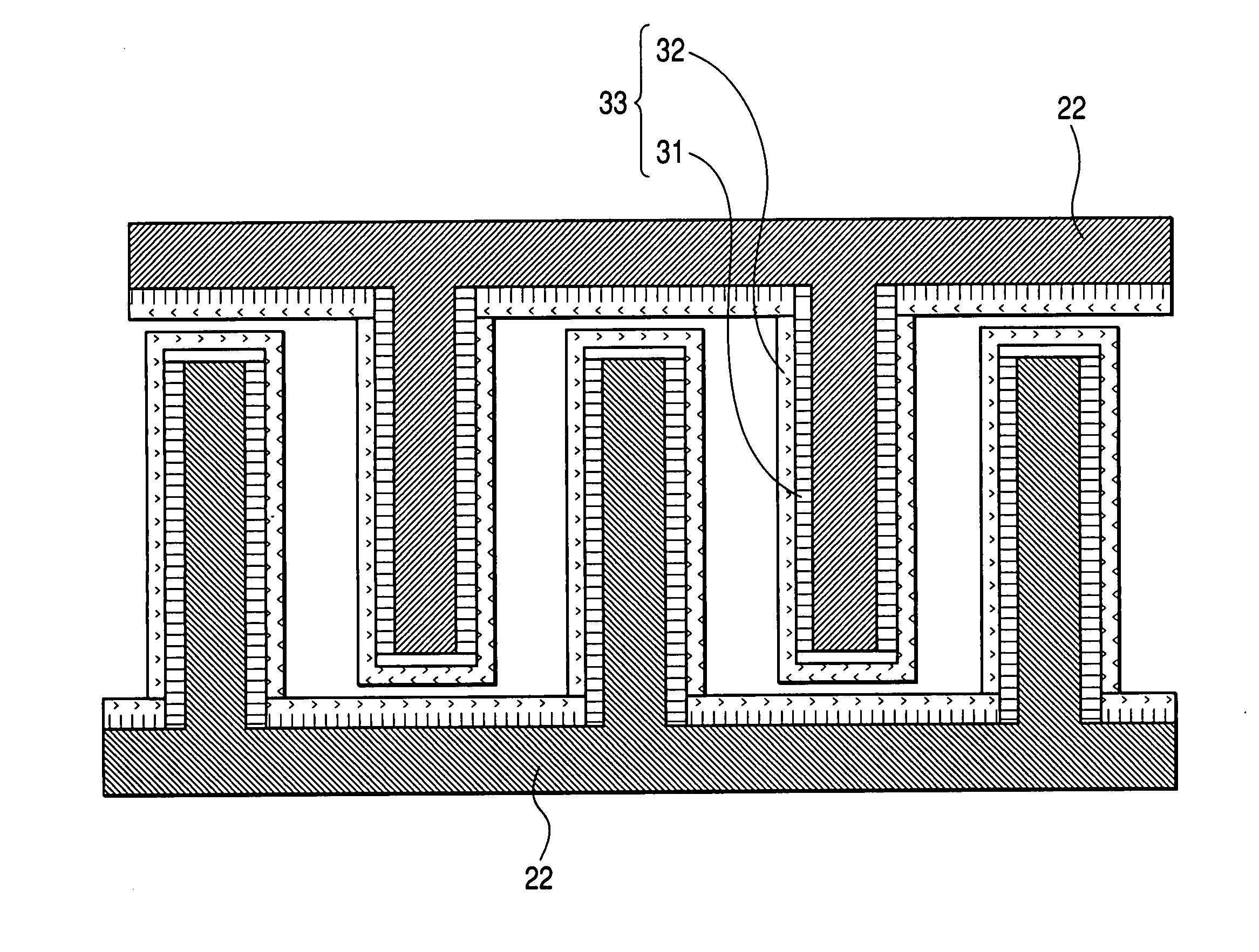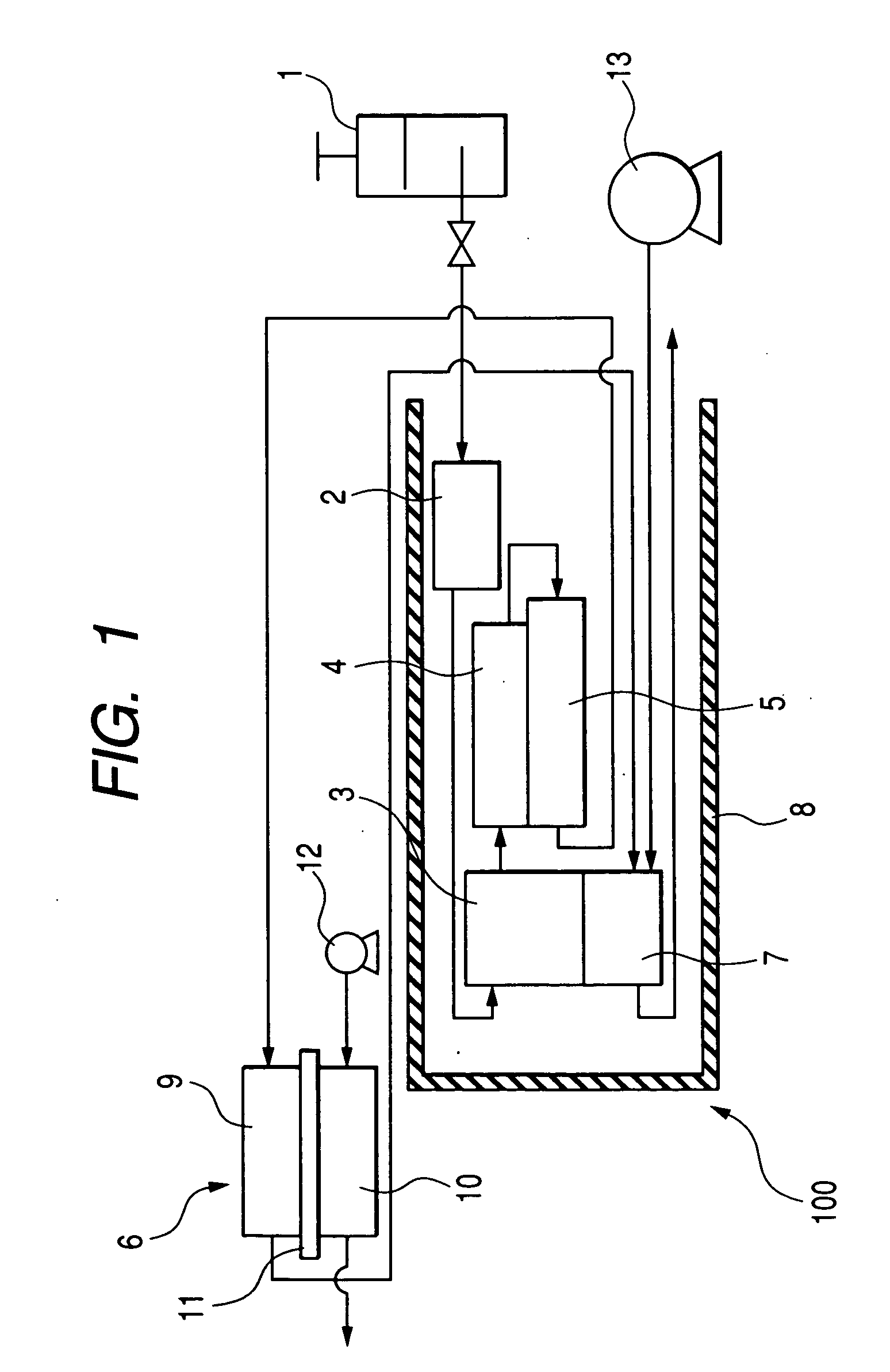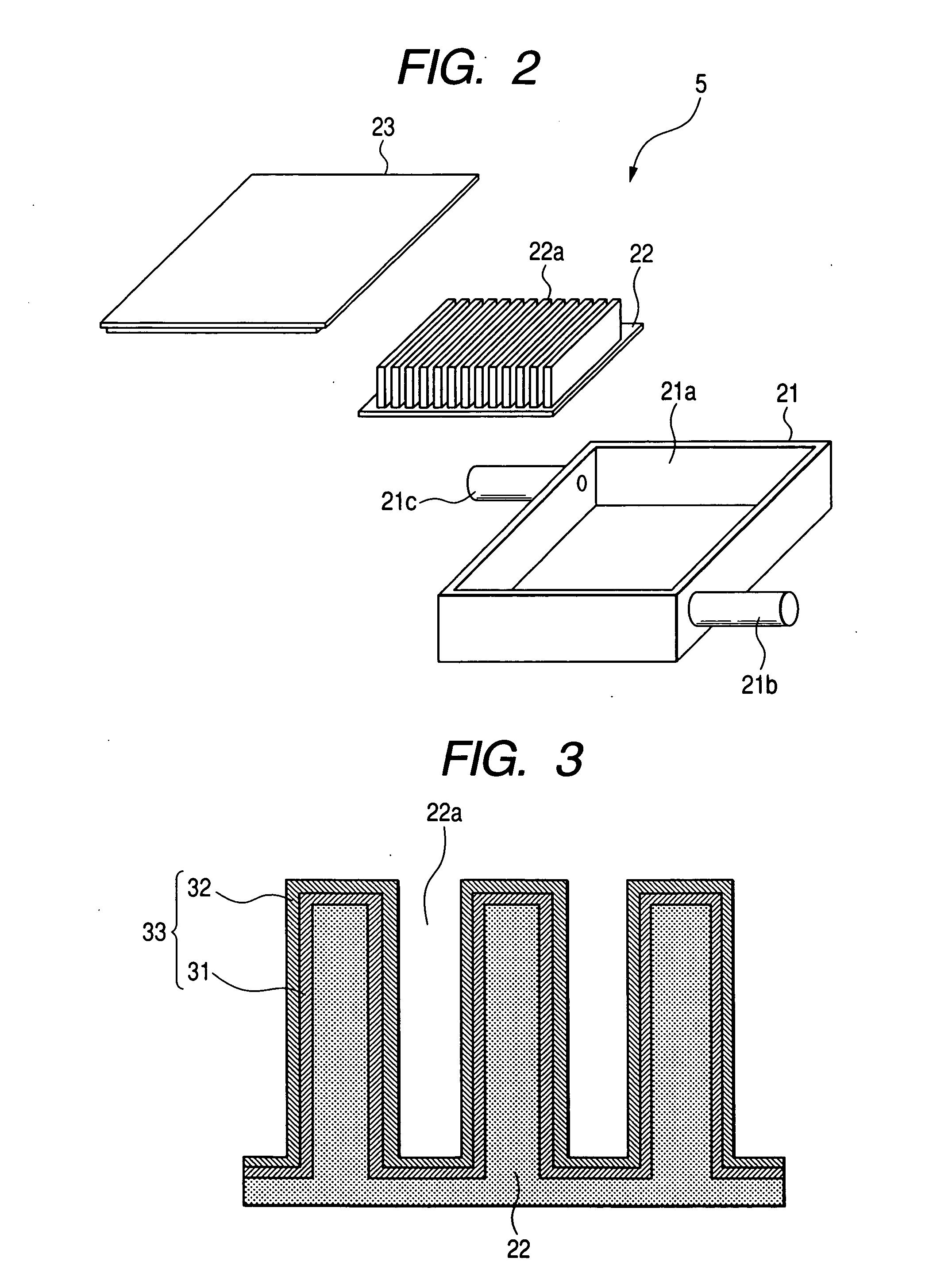Carbon monoxide removing method, carbon monoxide removing apparatus, method for producing same, hydrogen generating apparatus using same, and fuel cell system using same
a carbon monoxide and removing method technology, applied in the direction of physical/chemical process catalysts, sustainable manufacturing/processing, separation processes, etc., can solve the problems of deteriorating the capability of the reaction vessel to eliminate carbon monoxide per unit volume, deteriorating the capacity of the reaction vessel, and increasing the size of the hydrogen generating apparatus and the fuel cell system
- Summary
- Abstract
- Description
- Claims
- Application Information
AI Technical Summary
Benefits of technology
Problems solved by technology
Method used
Image
Examples
first embodiment
(First Embodiment)
[0027]FIG. 1 illustrates a first exemplary embodiment of a CO removing apparatus according to the invention and a fuel cell system using the same.
[0028] The fuel cell system includes a hydrogen generating apparatus 100 and a fuel cell 6.
[0029] The hydrogen generating apparatus 100 includes a fuel supplying unit 1. The fuel supplying unit 1 has a mixture of an organic compound containing carbon and hydrogen as a fuel for the fuel cell system and water stored therein. As a fuel there may be used a mixture of dimethyl ether and water or a mixture of dimethyl ether, water and an alcohol. As such an alcohol there is preferably used methanol, ethanol or the like. In particular, methanol is preferably used because the mutual solubility of dimethyl ether and water can be enhanced.
[0030] As the fuel supplying unit 1 there may be used, e.g., a pressure vessel attached detachably to the fuel cell system. The fuel can be supplied into the vaporization portion 2 described la...
second embodiment
(Second Embodiment)
[0068]FIG. 6 depicts a second embodiment of the hydrogen generating apparatus and fuel cell system according to the invention. Where the parts are the same as those of the first embodiment shown in FIG. 1, the same reference numerals are used. These parts will not be described.
[0069]FIG. 6 depicts a perspective view of the interior of the CO removing portion 5b. The other configurations are the same as those of the first embodiment. The CO removing portion 5b comprises a heater 41 (heating portion) provided therein in addition to the combustion portion 7. The heater 41 may be a cartridge heater having a high resistivity metal wound on an insulating material. The heater 41 receives an external energy, e.g., electric power, if the heater 41 is a cartridge heater. The electric power to be supplied into the heater 41 is supplied, e.g., from the fuel cell 6. When externally supplied with an energy, the heater 41 generates heat to heat the CO removing portion 5.
[0070]...
third embodiment
(Third Embodiment)
[0079]FIG. 7 depicts a third embodiment of the hydrogen generating apparatus and fuel cell system according to the invention. Where the parts are the same as those of the first embodiment shown in FIG. 1, the same reference numerals are used. These parts will not be described.
[0080]FIG. 7 depicts an exploded perspective view of the CO removing portion 5. The CO removing portion 5 comprises a catalyst portion 24 provided therein in place of the catalyst portion 22 according to the first embodiment. The catalyst portion 24 has a catalyst layer 33 provided on the surface of aluminum or alloy containing aluminum having a large number of voids or on the surface of the voids of aluminum or aluminum alloy. The pore of the void preferably is 1 mm or less. As aluminum or aluminum-containing alloy there may be used a porous aluminum material, a aluminum foam or a honeycomb-like aluminum material. The catalyst layer 33 is the same as that of the first embodiment and thus wil...
PUM
| Property | Measurement | Unit |
|---|---|---|
| temperature | aaaaa | aaaaa |
| width | aaaaa | aaaaa |
| pore diameter | aaaaa | aaaaa |
Abstract
Description
Claims
Application Information
 Login to View More
Login to View More - R&D
- Intellectual Property
- Life Sciences
- Materials
- Tech Scout
- Unparalleled Data Quality
- Higher Quality Content
- 60% Fewer Hallucinations
Browse by: Latest US Patents, China's latest patents, Technical Efficacy Thesaurus, Application Domain, Technology Topic, Popular Technical Reports.
© 2025 PatSnap. All rights reserved.Legal|Privacy policy|Modern Slavery Act Transparency Statement|Sitemap|About US| Contact US: help@patsnap.com



